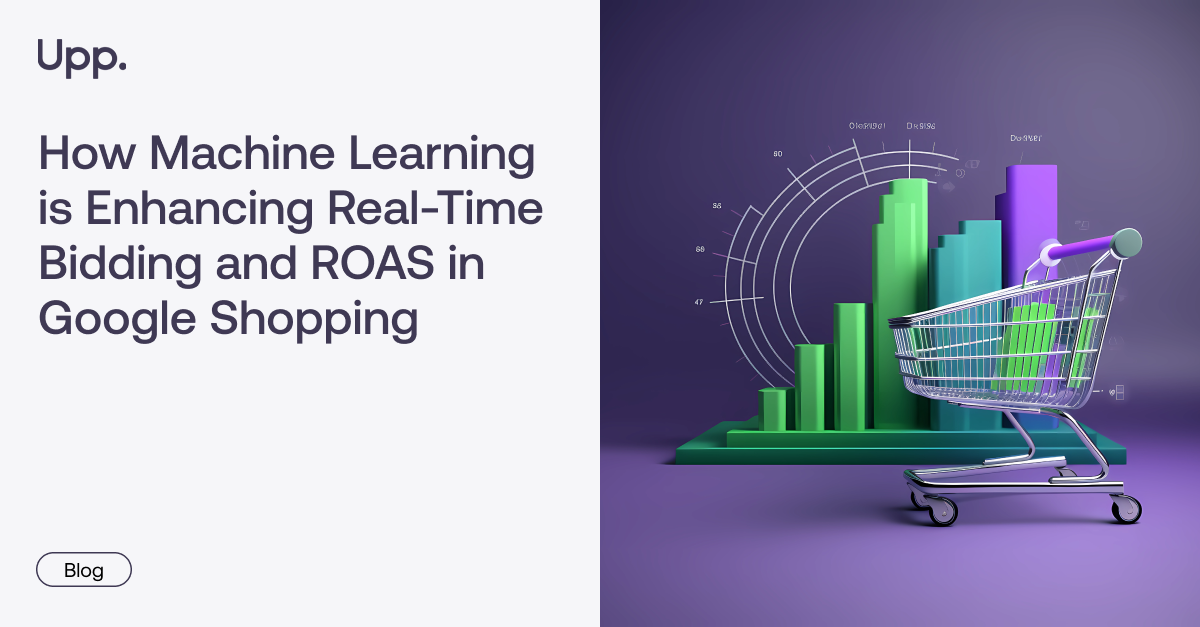Unlocking the advantages of Google GA4
New Conversion Tracking Opportunities for Retail PPC Managers
Introduction
In the world of digital marketing, staying ahead of the curve is crucial for success. PPC (Pay-Per-Click) managers working in the retail industry already understand the importance of conversion tracking and the impact it has on campaigns.
But have you unlocked the advantages of Google GA4 (Google Analytics 4), a powerful upgrade to the Google Analytics platform?
In this blog, we explore how GA4 can improve conversion tracking for retailers, providing you with new insights and opportunities to optimise your PPC campaigns.
Overview of Google GA4
GA4 represents the next evolution of Google Analytics, designed to meet the growing demands of the digital landscape. With GA4, Google aims to address the limitations of its predecessor, Universal Analytics, and provide a more comprehensive and flexible tracking solution.
The key distinction lies in the shift from a session-based model to an event-based one. GA4 focuses on tracking individual user interactions across devices and platforms, allowing for a more holistic understanding of user behaviour and attribution.
Reason for Google Analytics 4 Release
Before diving into the depths of GA4’s capabilities, it’s important to understand why Google felt the need to unveil this new version. The digital realm has witnessed a marked increase in users’ concerns over online privacy. How their data is used and stored has become a topic of major contention. Google’s introduction of GA4 is a direct response to these concerns.
Built from the ground up with privacy in mind, GA4 is aligned with Europe’s GDPR regulations, ensuring that user data is treated with utmost respect and transparency. By adopting GA4, brands not only get enhanced analytics capabilities but also position themselves as more trustworthy in the eyes of their customers.
Differences between Universal Analytics (UA) and GA4
Transitioning from Universal Analytics to GA4 isn’t just about upgrading to a new version, it’s about embracing a fundamentally different approach to data. Let’s dissect the major differences:
Privacy-Centric Approach
Universal Analytics was groundbreaking when launched, but GA4 takes data protection and privacy to a new level. Compliant with regulations like GDPR and CCPA, it offers brands better control over data privacy. It supports first-party data collection and integrates with Google’s Consent Mode, allowing you to gather data with user consent and comply with privacy regulations. By adopting GA4, you can build trust with your customers and ensure that your retail PPC campaigns align with privacy best practices.
Data Driven Attribution (DDA)
In today’s multi-device world, customers often interact with retailers through various touch points before making a purchase. Unlike UA, which requires different systems for web (UA) and app (Firebase) insights, GA4’s advanced cross-device tracking capabilities enable you to follow these interactions, providing a more accurate representation of the customer journey.
Traditional ‘last-click’ modelling, as employed by Universal Analytics, placed the entire credit of a conversion on the final touchpoint. While understanding the last interaction is undeniably crucial, it often ignores the multitude of interactions and touchpoints a user might have encountered before arriving at the final decision. Simply put, it’s akin to giving the entire credit of a relay race win to the last runner, disregarding the efforts of the ones before.
With a granular comprehension of user pathways, brands can tweak their campaigns real-time, especially when pairing DDA with automated bidding strategies. The outcome? Enhanced conversions without inflating the cost-per-acquisition, leading to a superior return on ad spend (ROAS).
Cross-device Tracking
In today’s multi-device world, customers often interact with retailers through various touch points before making a purchase. Unlike UA, which requires different systems for web (UA) and app (Firebase) insights, GA4’s advanced cross-device tracking capabilities enable you to follow these interactions, providing a more accurate representation of the customer journey.
By gaining a deeper understanding of how users engage with your website and ads across different devices, you can optimise your PPC campaigns for maximum impact.
Expanded Data Collection
GA4 incorporates a broader range of data collection capabilities compared to UA. It can capture events beyond traditional page views, such as video interactions, downloads, scroll depth, and more.
This granular level of data empowers you to track and measure specific user actions that are crucial for retail businesses, such as adding items to the cart, initiating checkout, and completing a purchase. And it’s these insights that will help you identify bottlenecks in the conversion funnel and refine your Google Shopping strategies accordingly.
Smarter Audience Insights
GA4 introduces an intelligent feature called “Enhanced Measurement” that automatically tracks key events, reducing the need for manual configuration. GA4 simplifies tracking with standard measurements for:
- Tracking when a user scrolls 90% of a page
- Monitoring outbound clicks
- Capturing when a user accesses the search results page
- Measuring engagement with embedded YouTube videos
- Tracking file downloads
This simplifies the process of gathering essential data points for retail PPC managers. Additionally, GA4’s machine learning capabilities enable you to gain deeper audience insights, such as predicting customer lifetime value (LTV) and segmenting users based on their potential value. Leveraging this knowledge, you can fine-tune your PPC campaigns to target high-value customers far more effectively.
The audience data generated by GA4 can also have significant impacts on your Google Ads campaigns. By feeding audience data back into Google Ads, it allows Google to understand what your converting audiences look like, and therefore what similar audiences look like so they can advertise to them helping you expand your reach.
It also gives you key insights into who your audience is and what their interests are. This will help you tailor your ad copy and website content to speak specifically to those audiences and their needs.
Machine Learning: With built-in machine-learning algorithms, GA4 can highlight trends, offer insights, and even make actionable recommendations automatically.
Bounce Rate Redefined: GA4’s new definition considers a bounce as a visit less than 10 seconds without any further interaction, though this can be adjusted.
Evolution of Goals: The traditional ‘Goals’ are now “Conversion Events” in GA4, offering more in-depth insights into user interactions and behaviours.
Behavioural Modelling: By leveraging machine learning, GA4 bridges the data gap in real-time reporting when cookies or other identifiers are absent.
Custom Channel Grouping: Tailor your channels and contrast their collective performance for deeper insights.
Direct Integrations: GA4’s direct sync with Google Ads enhances transparency and eases conversion action tracking. There are simple to install plugins for eCommerce platforms such as Shopify & WooCommerce which allows quick and easy integrations even for beginners.
GA4 is the future of analytics, empowering businesses to gain a deeper understanding of customer behaviour in an evolving digital landscape. The upgrade aims to provide a more holistic view of user interactions, facilitate smarter decision-making, and offer advanced attribution modelling. Google’s upgrade has also recognised the importance of privacy and is clearly aiming to equip businesses with tools that comply with regulatory requirements while driving actionable insights.
Elevating Ecommerce with GA4:
Site Search Tracking:
One of GA4’s standout features, especially for eCommerce businesses, is its advanced site search tracking. The ability to observe and analyse what visitors search for on your website is invaluable. Such insights allow brands to decipher their visitors’ intent, align their offerings, and optimise their website based on users’ preferences.
When a visitor lands on your eCommerce site, the terms they search for reveal several facets. It speaks to their intent, helps determine if your site offers what they seek, and gives insights into how they perceive and describe your products. For instance, if a visitor searches for a ‘blue leather phone case for iPhone 13 Pro’, not only do you understand their specific need, but also the language they use, enabling you to tailor your product descriptions and ads better.
By harnessing the power of site search tracking, businesses can refine their strategies, ensuring that they not only meet but exceed their visitors’ expectations.
As a PPC manager in the retail industry, leveraging the power of Google GA4 is crucial for unlocking new conversion tracking opportunities. With enhanced cross-device tracking, expanded data collection, smarter audience insights, and a privacy-centric approach, GA4 empowers you to optimise your PPC campaigns for maximum effectiveness.
AI and Machine learning platforms are central to this new age of online retail, and will allow Digital Marketing teams to automate their time-consuming manual tasks and spend more time using the data they have to improve their strategies. Our customers are already seeing a competitive advantage from automating the management of their Google Shopping. After 12 months our customers have improved their performance across the board with (on average) an astonishing 52% uplift in revenue. Improvements of this scale are simply not possible for PPC Managers who aren’t able to work with the insights that only machines working 24/7 can provide for them.
GA4 is now also offering PPC Managers a competitive edge in the dynamic world of eCommerce – but act fast as your competition is learning the benefits of Google Analytics too!



